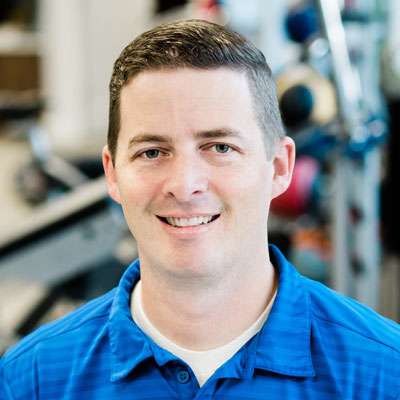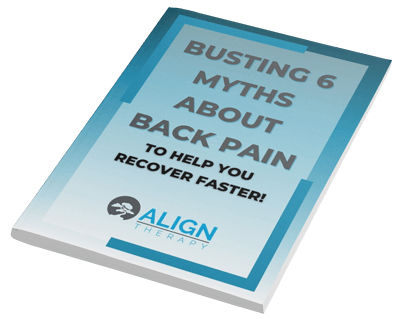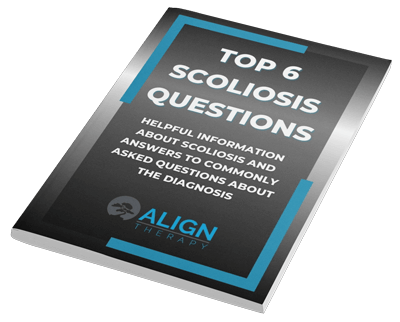
This running season has been fun treating quite a variety of runners. I have seen everything from the most seasoned ultra marathoner, to runners just beginning their journey, and it has been a great experience to see their different challenges.
One thing I have found interesting over the years is the common beliefs runners have. Some are true and some are not. Here are a few myths I hear frequently!
Running will ruin your knees!
This is one I hear frequently and is definitely not true. I have heard this from some looking to get into running using this as a reason why they hesitate, as well as some with knee pain who have been told by their friends or family, or even doctors, to stop running.
 Recent studies have looked at this and found runners have no higher rates of knee arthritis than anyone else. If anything, the results seem to show a slightly decreased risk of knee arthritis in those who run.I think the bottom line is it is better to be active than sedentary, and if running is something you enjoy, don’t worry about it wearing out your knees.
Recent studies have looked at this and found runners have no higher rates of knee arthritis than anyone else. If anything, the results seem to show a slightly decreased risk of knee arthritis in those who run.I think the bottom line is it is better to be active than sedentary, and if running is something you enjoy, don’t worry about it wearing out your knees.Running on the road is “softer” than running on the sidewalk.
This is one that I continue to hear on occasion. The thought is that if you run on the asphalt, it is softer and easier on your body. I tested this theory on softness out and went outside, balled up my fist, and punched the road and then the sidewalk! (Just kidding, but I think you can guess what the result would be.)
 A few years ago, there was a study looking at surfaces that lessen the force when your foot contacts the ground. The only one that was found to lessen that force was grass.In fact, I actually see more problems from running on the road, especially if it is the same side of the road all the time. There is a slope on the side of the road to help water drain into the gutter, and this makes the legs uneven, which tips the pelvis. This can lead to IT band issues, hip pain, and foot and ankle problems.
A few years ago, there was a study looking at surfaces that lessen the force when your foot contacts the ground. The only one that was found to lessen that force was grass.In fact, I actually see more problems from running on the road, especially if it is the same side of the road all the time. There is a slope on the side of the road to help water drain into the gutter, and this makes the legs uneven, which tips the pelvis. This can lead to IT band issues, hip pain, and foot and ankle problems.You need to stretch before running to avoid injury.
At the beginning of a race I like to look around and see what others are doing to prepare. Most of the time I see a lot of stretching going on. This may be somewhat habit and many are trying to avoid injury or have a better race. Does it actually do anything?
 Stretching, it turns out, doesn’t reduce the risk of injury. There is actually some evidence it causes the muscle to be more tired and not contract as quickly.A better way to reduce the risk of injury and warm up is to do something to get the muscles ready to run like butt kicks, jumps, or something else similar to running. One of the best ways is to start off your run slower until the body has some time to warm up before going all out.
Stretching, it turns out, doesn’t reduce the risk of injury. There is actually some evidence it causes the muscle to be more tired and not contract as quickly.A better way to reduce the risk of injury and warm up is to do something to get the muscles ready to run like butt kicks, jumps, or something else similar to running. One of the best ways is to start off your run slower until the body has some time to warm up before going all out.Run Barefoot to avoid injury.
Anyone reading Christopher McDougall’s book “Born to Run” wants to become Barefoot Ted and shed the shackles of decades of running “science”. While they make some good points in this book, it shouldn’t be taken as scientific fact.
 Running barefoot for short distances can encourage better running mechanics and can help you improve, but it can also lead to more injuries if not transitioned to very slowly. For most of our lives we wear shoes that support our feet. When we go straight to no support we can develop other issues.I am not opposed to minimalist shoes or Zero Drop shoes (which I personally run in), but I don’t usually encourage barefoot running.
Running barefoot for short distances can encourage better running mechanics and can help you improve, but it can also lead to more injuries if not transitioned to very slowly. For most of our lives we wear shoes that support our feet. When we go straight to no support we can develop other issues.I am not opposed to minimalist shoes or Zero Drop shoes (which I personally run in), but I don’t usually encourage barefoot running.Pronation is Bad!
Good News! As much as shoe companies make it the enemy, pronation is natural and is actually a good thing during running as it helps to shock absorb and adapt to the forces going through the legs.
 Actually, it seems the more we try to control the arch and limit pronation, the more injury prone we become.There are sometimes where I do see excessive pronation, and there are some things we can do including inserts, footwear, and strengthening that can help. To determine if it is excessive though, a thorough analysis of running form should be performed.
Actually, it seems the more we try to control the arch and limit pronation, the more injury prone we become.There are sometimes where I do see excessive pronation, and there are some things we can do including inserts, footwear, and strengthening that can help. To determine if it is excessive though, a thorough analysis of running form should be performed.
There are many other myths surrounding running, but these are the top ones I hear. If you have running related questions, or want to learn more about running form, check out my FREE Report “5 Secret Running Tips to Help You Run Faster and Pain Free!”. You can Download it HERE.








